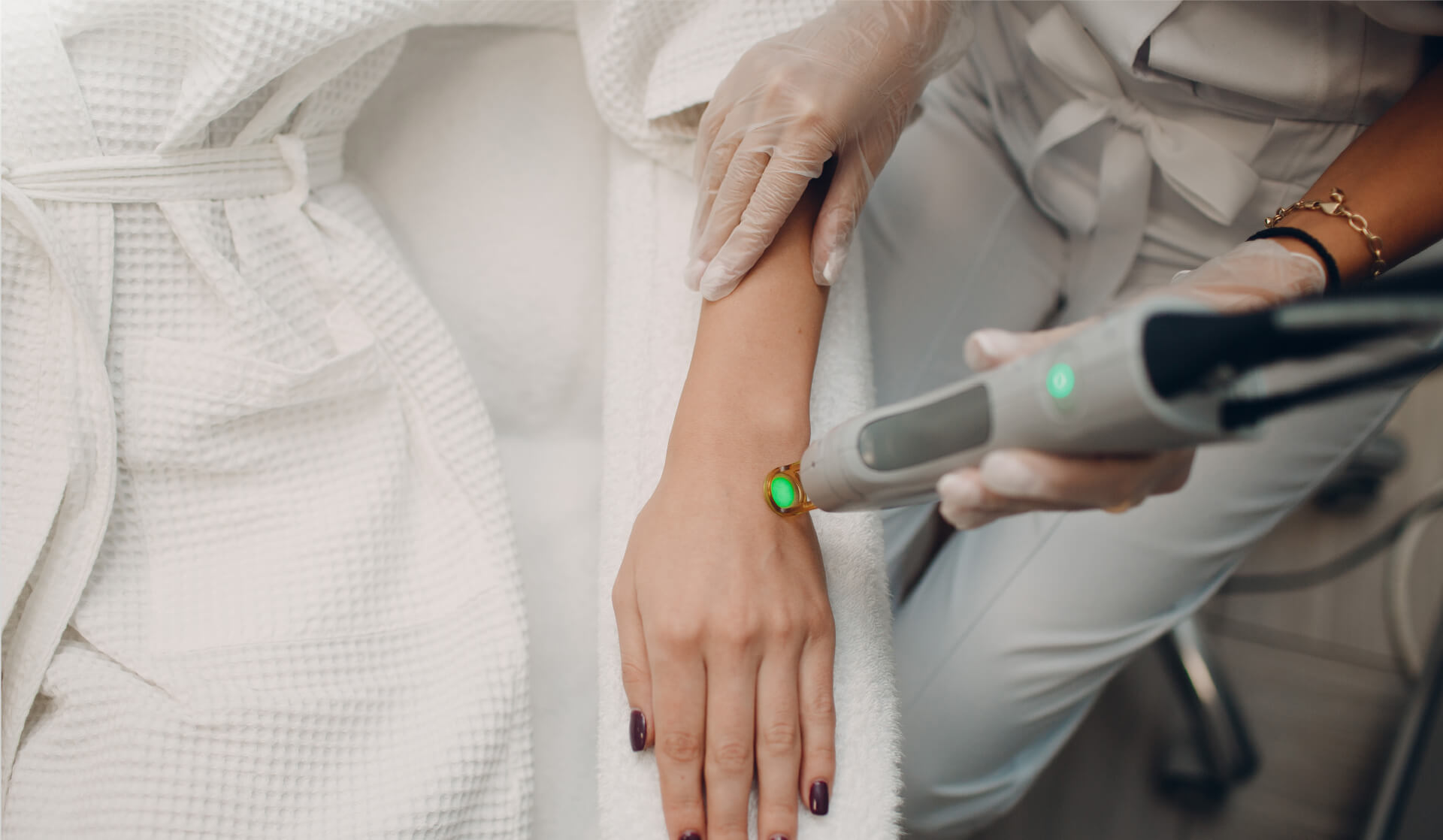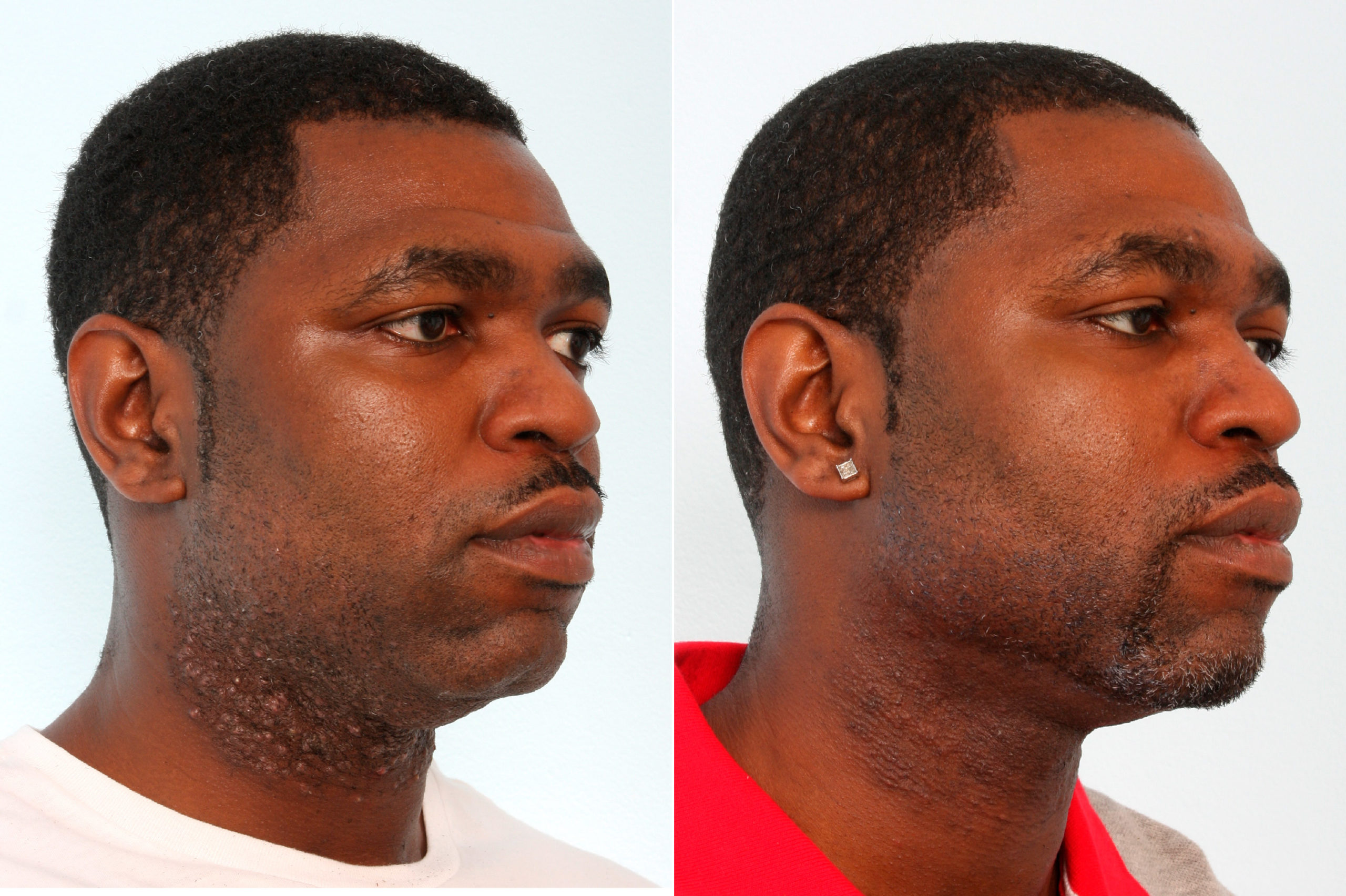Table Of Content

Talk with your dermatologist for further advice on selecting the best hair removal methods for you. Also, apply sunscreen to the treatment area before going outdoors. Use a water-resistant sunscreen that contains an SPF of at least 30 or more. Paul also notes that a true laser is usually only administered in a clinical setting because of many safety issues, making it harder for a patient to buy one.
Care after at-home laser treatment

Laser hair removal is a noninvasive way to reduce or remove unwanted body hair. With more than one million procedures performed in 2016, laser hair removal is one of the most popular minimally invasive cosmetic treatments in the United States. It can be a good option for those with excess body hair who are looking for a way to effectively reduce or remove hair from both large and small areas of the body. More serious side effects tend to occur when the technician performing the procedure does not have enough experience in safe and effective laser hair removal practices. To reduce your risk of skin damage, it's important to choose a medical professional who is highly educated in using lasers to perform the treatment. If a physician assistant or licensed nurse will do the procedure, make sure a doctor supervises and is available on-site during the treatments.
When to see a doctor
Take the time to compare available features, using this guide as a starting point. The hair follicles that have been treated should stop growing hair. The hair that does grow back will likely be thinner and more fine. When used correctly, at-home IPL devices can be safe and effective. At-home devices are created with a lower strength than the devices used in doctor’s offices.
You are unable to access laseraway.com
It’s also important to trim some of the hair in the treatment area to make the procedure smoother. Don’t hesitate to ask us anything you need to know about laser hair removal. The main difference between professional and at-home tools is the intensity of their light sources and the nature of their light sources. "IPL stands for 'intense pulsed light' and uses broad-spectrum visible light." With any at-home hair removal device or laser hair removal procedure in a dermatologist’s office, it’s important to avoid waxing or tweezing between treatments. Rather, shave only to preserve the hair follicle so the laser or IPL device has something to target during your next treatment.
Iluminage TOUCH Permanent Hair Reduction System
An experienced, board certified professional will work to reduce side effects from laser hair removal by using the right types of lasers for your skin and hair color or type. They will also ask you about your medical history and any medications you take that might cause adverse reactions. Most at-home laser hair removal devices come with larger price tags, but this one from RoseSkinCo. Although it’s more affordable, the device doesn’t falter when it comes to results; you’ll start noticing positive benefits in as little as four 45-minute treatments.
10 Best At Home Laser Hair Removal Devices (Tests & Reviews 2024) - Cosmopolitan
10 Best At Home Laser Hair Removal Devices (Tests & Reviews .
Posted: Tue, 26 Mar 2024 07:00:00 GMT [source]
Ulike Air 3 IPL Hair Removal

Now that you have your preferred laser hair removal device, you’ll want to prepare before use. Make sure the device is fully charged and read the safety instructions. You used to have to visit a dermatologist for laser hair removal, and this is still the most effective route, but you can consider home laser hair removal devices instead. When some of the hair regrows, it will likely be less noticeable.
Will I need multiple treatments?
It’s a good idea to keep your desired treatment area in mind when selecting an at-home laser hair removal device, especially if you want to cover larger parts on the body. An automatic flashing feature (like the one found on the Ulike Sapphire Air 3) allows you to cover more surface area without having to hold down a button. Some devices, like the Braun Silk Expert Pro 5, include different detachable laser heads that allow you to target specific places that are hard to reach, like the bikini line. No, a laser can’t cause more hair to grow in the treated areas. However, patients need to remember that our body goes through a lot of changes as we age – this includes new hair growth in places where there wasn’t before.
Although laser hair removal effectively delays hair growth for long periods, it usually doesn't result in permanent hair removal. Multiple laser hair removal treatments are needed for initial hair removal, and maintenance treatments might be needed as well. Laser hair removal is most effective for people who have light skin and dark hair, but it can be successfully used on all skin types.
Q: Is laser hair removal a permanent hair reduction treatment?
It typically takes between three and eight sessions for permanent hair loss. The evaluation with your specialist before the procedure will give you a better idea of how many treatment sessions you may need. Also, you will likely need a touch-up session yearly to maintain effect. Hair color and skin type influence the success of laser hair removal. The basic principle is that the pigment of the hair, but not the pigment of the skin, should absorb the light.
The recovery time after the procedure is minimal and most patients can return to life as normal directly after. Just as wearing sunscreen before the procedure is important, so is continuing to wear it after the procedure. At the consultation, discuss a treatment plan and related costs. Laser hair removal may remove or greatly lessen the hair on your treated area.
Those being treated for hormonal imbalances may also have low success with instances of hair regrowth, requiring more treatment or maintenance sessions than others. While there are plenty of benefits to laser hair removal, it still comes with its fair share of risks and side effects. In order to avoid potentially uncomfortable side effects, Dr. Malik recommends doing your research before selecting a place to get the treatment done. “It is vital to see someone with an in-depth knowledge of the skin and which lasers are okay for specific skin types, as not all lasers are appropriate for laser hair removal,” he says.
Most people see about a 10% to 25% reduction in hair growth after the first treatment. After all your treatments, you may not have new hair growth for several months or years. Laser hair removal is usually safe and effective for most people. Only an experienced healthcare provider should perform the procedure. Laser hair removal uses a process called selective photothermolysis.
To remove the hair, most patients need 2 to 6 laser treatments. After finishing the treatments, most patients do not see any hair on the treated skin for several months or even years. Some side effects of laser hair removal include mild redness and swelling and more rarely, burning or scarring of the skin. It's important to choose a board-certified medical professional skilled in laser use to perform the treatment to reduce your risk of skin damage or injury. When the doctor activates the laser, the laser beam will pass through your skin to the hair follicles.
"This does not mean that there is zero chance that something can go wrong, but the odds of something happening are very low," she says. Soft to hold against your skin, this IPL device has a smooth silicone handle and a unique treatment head where the lamp is surrounded by a ring of silicone. Plus, there are air vents inside the silicone ring that deliver cool air to the treatment area.













